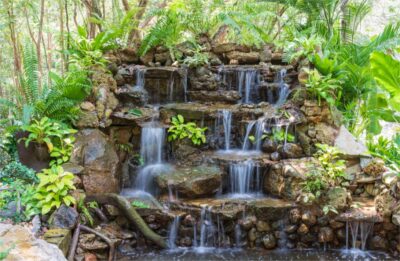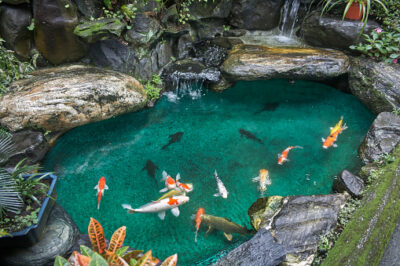Depth is an important design aspect of any pond. If the water depth is too deep, it will be difficult to reach into the water to clean out debris or add water treatments. On the other hand, if it’s too shallow, you may have fish who can’t easily swim to the surface for air.
Pond depth also affects water temperature and how much sunlight penetrates into the water. A deeper body of water will maintain a more consistent temperature throughout the year than a shallow one.
If a pond is too deep, it may also lose heat more quickly during cold winter months. Most ponds are designed with depths between 3 feet and 8 feet depending on what species of fish you intend to keep in it and how many of them you want to keep there.
How deep should my pond be?
The depth of your pond is one of the most important considerations for any water garden. The proper depth will allow you to create a balanced ecosystem that will support plant life, fish and other aquatic creatures.
The ideal depth for your pond depends on several factors, including:
The size of your pond. Smaller ponds require less depth than larger ponds and are more likely to freeze in colder climates.
The type of plants you want to grow in the pond. Plants like lilies need deeper water than some other plants, such as water hyacinths and lotus flowers.
The types of fish and other wildlife you want to keep in your pond. Smaller fish will thrive in shallower depths while larger ones may need deeper water to avoid predators and survive winter temperatures.
How to Measure Depth Of a Pond
How to calculate the capacity of your pond? This is probably one of the most common questions we get from people who are thinking about building a pond. The answer will depend on several factors, including the size and shape of your pond, its depth and aeration.
- Calculate the surface area of your pond. To do this, you need to know how many square feet of surface area you have in total. If you have an irregularly shaped pond (or even if it’s rectangular), calculating this can be somewhat difficult. But there are some free online tools that can help you with this task:
- Once you have this number, calculate the average depth of your pond by dividing its surface area by eight (8).
- Use this number as a starting point for calculating how much water is in your pond at any given time (and therefore how much water it will hold).
How To Calculate Your Pond Capacity Using Surface Area
First, measure the length, width, and depth of your pond in feet (or meters). If your pond isn’t rectangular or square, you may need to calculate the area using trigonometry; see this article for an example using Google Earth.
Then multiply these dimensions together:
Length x Width = Area
Depth x Depth = Volume
Area x Volume = Total CapacityDepth and Aeration of your Pond
To calculate how much water your pond can hold, you need to know a few basic measurements. These include:
Pond size – This is the width and length of the pond in feet.
Depth – The maximum depth of the pond in feet.
Aeration – The number of units (such as air stones) needed to ensure adequate aeration throughout the entire depth of water in your pond. For example, if your pond is 100 feet long and 15 feet wide, it will require one air stone for every 10 feet of depth (0.05 square feet per unit).









